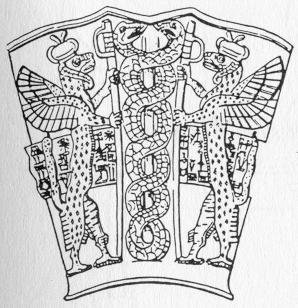|
|
Post by Goldenfleeced on Dec 2, 2014 1:45:38 GMT
Well, since this is the first day of December, and the holy days/holidays loom large, even if the daylight doesn't, I thought that this would be a good time to begin a thread dedicated to the holy days/holidays, and the reasons that we are 'celebrating' at this time. By now, I know that you all have your ideas, or at least suspicions, as have I... The truth is that this particular holiday has left me feeling somewhat 'flat' for the last many years, and I couldn't help wondering what the 'problem' was... besides me, that is... lol... And now, the Truth is that I've misunderstood the holy day/holiday... and just what it means, and just why we 'light the trees,' and look with Hope for a Star... and maybe this year, that Star will rise and shine with a glorious light, once again... I chose to make an entry on this subject every day for the next twenty-four days, which will bring us to Christ-mas Eve... the purpose of the twenty-four days is to represent the double pillars of twelve sections, which are represented on either side of the High Priestess... To begin, I would like to give you a poem... by William Yeats... which has been read, and puzzled over, for many years now; let's read it again this evening, and reflect on its meaning in light of what it is that we've been discussing here, and the Nature of the days ahead... The Second Coming
Turning and turning in the widening gyre
The falcon cannot hear the falconer;
Things fall apart; the centre cannot hold;
Mere anarchy is loosed upon the world,
The blood-dimmed tide is loosed, and everywhere
The ceremony of innocence is drowned;
The best lack all conviction, while the worst
Are full of passionate intensity.
Surely some revelation is at hand;
Surely the Second Coming is at hand.
The Second Coming! Hardly are those words out
When a vast image out of Spiritus Mundi
Troubles my sight: somewhere in sands of the desert
A shape with lion body and the head of a man,
A gaze blank and pitiless as the sun,
Is moving its slow thighs, while all about it
Reel shadows of the indignant desert birds.
The darkness drops again; but now I know
That twenty centuries of stony sleep
Were vexed to nightmare by a rocking cradle,
And what rough beast, its hour come round at last,
Slouches towards Bethlehem to be born?
Now, as to Yeats... this is also very interesting, considering our interest in 'spirals'... Yeats spent years crafting an elaborate, mystical theory of the universe that he described in his book A Vision. This theory issued in part from Yeats’s lifelong fascination with the occult and mystical, and in part from the sense of responsibility Yeats felt to order his experience within a structured belief system. The system is extremely complicated and not of any lasting importance—except for the effect that it had on his poetry, which is of extraordinary lasting importance. The theory of history Yeats articulated in A Vision centers on a diagram made of two conical spirals, one inside the other, so that the widest part of one of the spirals rings around the narrowest part of the other spiral, and vice versa. Yeats believed that this image (he called the spirals “gyres”) captured the contrary motions inherent within the historical process, and he divided each gyre into specific regions that represented particular kinds of historical periods (and could also represent the psychological phases of an individual’s development).
“The Second Coming” was intended by Yeats to describe the current historical moment (the poem appeared in 1921) in terms of these gyres. Yeats believed that the world was on the threshold of an apocalyptic revelation, as history reached the end of the outer gyre (to speak roughly) and began moving along the inner gyre.
www.sparknotes.com/poetry/yeats/section5.rhtmlNow, 'gyres' and 'gyring' sound familiar... in an 'Od' sort of a way... Oh, yes... watch this...
Jabberwocky
By Lewis Carroll
’Twas brillig, and the slithy toves
Did gyre and gimble in the wabe:
All mimsy were the borogoves,
And the mome raths outgrabe.
“Beware the Jabberwock, my son!
The jaws that bite, the claws that catch!
Beware the Jubjub bird, and shun
The frumious Bandersnatch!”
He took his vorpal sword in hand;
Long time the manxome foe he sought—
So rested he by the Tumtum tree
And stood awhile in thought.
And, as in uffish thought he stood,
The Jabberwock, with eyes of flame,
Came whiffling through the tulgey wood,
And burbled as it came!
One, two! One, two! And through and through
The vorpal blade went snicker-snack!
He left it dead, and with its head
He went galumphing back.
“And hast thou slain the Jabberwock?
Come to my arms, my beamish boy!
O frabjous day! Callooh! Callay!”
He chortled in his joy.
’Twas brillig, and the slithy toves
Did gyre and gimble in the wabe:
All mimsy were the borogoves,
And the mome raths outgrabe.
 That's one crazy 'beast,' all right... it's got the face of a 'catfish' and the wings of a 'dragon,' I'd say... with the scaly tail of a snake/serpent. And notice the words, "my beamish boy," in regard to the 'slayer' of the Jabberwock... sounds like a Sun/Son to me; a real David and the Giant story... with a sword...  Just interesting... and 'frabjous holidays'... |
|
|
|
Post by Goldenfleeced on Dec 3, 2014 4:43:21 GMT
Look at this... "New Pope Takes Over," it says... on November 10, 1958...  It had been better titled, "The Grinch that Stole Christ-mas," if you ask me... Or, maybe it's one of these... 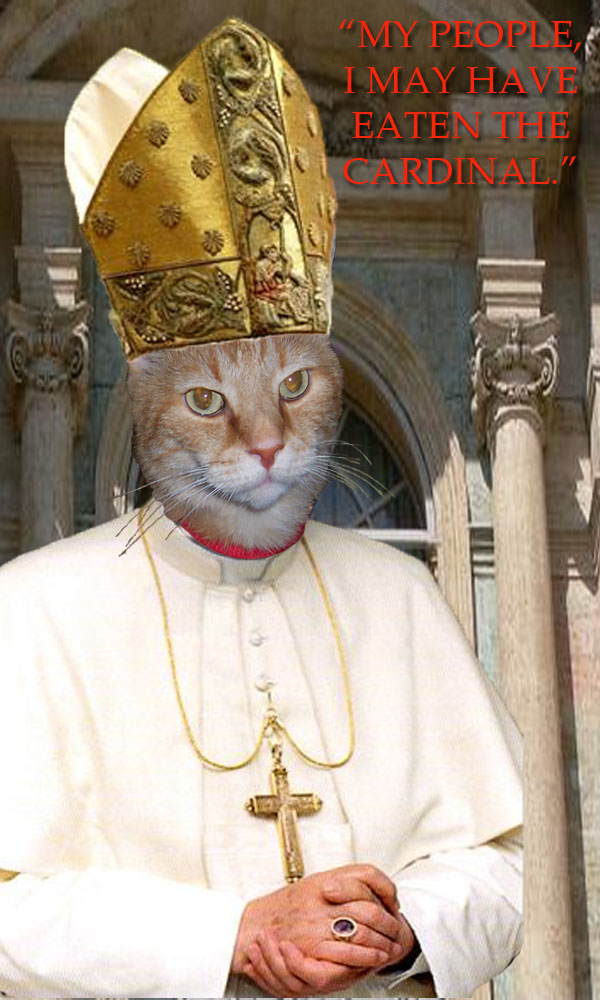   They all look alike to me. And, hay... somebody sat on your cat. Maybe you should try to blow into its nose, and puff it back up... massage its little heart... or, at least, leave it smiling... For God's sake...  |
|
|
|
Post by Goldenfleeced on Dec 3, 2014 4:56:22 GMT
You think I'm kidding, don't you...? How the Grinch Stole Christmas! is a children's story by Theodor "Dr. Seuss" Geisel written in rhymed verse with illustrations by the author. It was published as a book by Random House in 1957...en.wikipedia.org/wiki/How_the_Grinch_Stole_Christmas! Well, how do you like that?  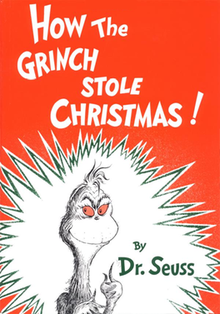 Someday, you know, the cats are going to rise up against you, simply because they're tired of the humiliation... honest to goodness.  |
|
|
|
Post by Goldenfleeced on Dec 4, 2014 5:53:40 GMT
All right, then... that was... fun... but, let's continue with something in a more 'serious' vein, shall we? and since the season is a time for 'holy day Magic' and 'Stars,' I've chosen this excerpt from Albert Pike's Morals and Dogma,- from the 32nd (and final) degree given, "Sublime Prince of the Royal Secret"... Magic is that which it is; it is by itself, like the mathematics; for it is the exact and absolute science of Nature and its laws.
Magic is the ancient science of the Ancient Magi: and the Christian religion, which has imposed silence on the lying oracles, and put an end to the prestiges of false Gods, itself reveres those Magi who came from the East, guided by a Star, to adore the Savior of the World in His cradle.
Tradition also gives these Magi the title of "Kings;" because initiation into Magism constitutes a genuine royalty; and because the grand art of the Magi is styled by all the Adepts, "The Royal Art," or the Holy Realm or Empire, Sanctum Regnum.
The Star which guided them is that same Blazing Star, the image whereof we find in all initiations. To the Alchemists, it is the sign of the Quintessence; to the Magists, the Grand Arcanum; to the Kabalists, the Sacred Pentagram. The study of this Pentagram could not but lead the Magi to the knowledge of the New Name which was about to raise itself above all names, and cause all creatures capable of adoration to bend the knee...
It is not in the books of the Philosophers, but in the religious symbolism of the Ancients, that we must look for the footprints of Science, and re-discover the Mysteries of Knowledge...
When Truth comes into the World, the Star of Knowledge advises the Magi of it, and they hasten to adore the Infant who creates the Future...  Arcanum 17... Hope... ... and notice that it's an eight-rayed Star; I think we covered that.  But, more importantly, please notice the underlined portion of the text which mentions the mysterious 'Qunintessence,' in relation to our Blazing Star of the Magi. Now, remembering that Alchemy is referred to as the 'Royal Art,' and that our 'King' Merovee (Merovius) was said to have been fathered by an equally mysterious 'Quinotaur,' which rose from a 'kingdom in the sea,' what do you suppose it all means...? Real-ly means...  |
|
|
|
Post by Goldenfleeced on Dec 4, 2014 6:02:19 GMT
My kingdom is not of this world...
"Tradition also gives these Magi the title of "Kings;" because initiation into Magism constitutes a genuine royalty; and because the grand art of the Magi is styled by all the Adepts, "The Royal Art," or the Holy Realm or Empire, Sanctum Regnum."
|
|
|
|
Post by Goldenfleeced on Dec 5, 2014 4:12:52 GMT
The Christ-mas holy day season is really special... mostly having to do with the 'traditions' associated with it, and our memories of them. 'Traditionally,' one of the best parts of the holiday is the Christmas tree; even now, I have to admit that there is very little more magical to me than the sight of the tree, lit in the dark, with all of the pretty things hanging from it. So, let me share some of the 'history' of our Christmas Tree with you now, and see if we can find anything 'hidden' under it... What was the origin of the Christmas tree? As much as I would like to embrace as fact the oft-quoted story that Martin Luther was the first to set up a Christmas tree (or at least a lighted one), I cannot -- for the story is pure legend. Many years of intensive Luther scholarship has turned up nothing to support it. There is scholarly consensus, however, that the Christmas tree originated in Germany. Indeed, the earliest record of an evergreen tree being used and decorated (but without lights) for Christmas is 1521 in the German region of Alsace. Another useful description has been found among the notes of an unknown resident of Strasbourg in 1605, who writes that "At Christmas they set up fir trees in the parlors at Strasburg and hang thereon roses cut of many- coloured paper, apples, wafers, gold-foil, sweets . . ." Some fifty years later (about 1650) the great Lutheran theologian Johann Dannhauer wrote in his The Milk of the Catechism that "the Christmas or fir tree, which people set up in their houses, hang with dolls and sweets, and afterwards shake and deflower. . . Whence comes this custom I know not; it is child's play . . . Far better were it to point the children to the spiritual cedar-tree, Jesus Christ."Now, I would like to point out two things in the quote above, before we go on... First, the German region of Alsace has been indicated as the earliest recorded location of a 'Christ-mas tree' being used... Alsace-Lorraine region, most likely, I'd say... and then, notice the second bolded piece: "it is child's play." Now, where have I heard that before...? Oh, yes... "The topoi of “women’s work” and “child’s play” is central to alchemy. Known to Alexandrian hermetics, the allegory of women’s work, like that of child’s play, occurs in many different alchemical treatises prompting varying interpretations. The relevant passage of text in the Splendor Solis treats the alchemical operations of sublimation and distillation. The state of perfect whiteness can be achieved through sublimation. This constitutes the penultimate stage of the alchemical process, hence the comparison with women’s work. As the text states (f. 32r): “Darumb vergleicht man diese kunst der Weiber arbaitt das ist waschen das weis werd, Khochen und Pratt˜ das genueg seÿ.” (Therefore they compare this art to women’s work; that is, washing until it becomes white, cooking and roasting until it is done.) Salmon views women’s work as a metaphor for the creation of the philosopher’s stone which alchemists were supposed to nurture in the same way as a mother would tend and nourish a new-born child..." www.moleiro.com/en/miscellanea/splendor-solis/miniatura/1640 To continue, then... Several conclusions can be gleaned from these quotations. First, we are told some of the items with which the first Christmas trees were decorated: paper roses, apples, Communion wafers, gold, foil, sweets, and dolls. Second, even in 1650 a noted scholar like Dannhauer did not know the origin of Christmas trees. Third, not all Christians approved of these trees, even in the beginning. Fourth, the first Christmas trees, as far as we know, did not have lights. According to Weiser, the first mention of lights (candles) on a Christmas tree is in the seventeenth century.
From the mid-seventeenth century on the Christmas tree slowly grew in popularity and use. However, it was not until the beginning of the 19th century that the use of the Christmas tree grew into the general German custom that it is today. Also at this time it spread to the Slavic people of eastern Europe. The Christmas tree was probably first used in America about 1700 when the first wave of German immigration settled in western Pennsylvania. During the War of Independence, Hessian soldiers supposedly set up Christmas trees. It is widely held that the Christmas tree was first introduced into France in 1837 when Princess Helen of Mecklenburg brought it to Paris after her marriage to the Duke of Orléans. The Christmas tree made its royal debut in England when Prince Albert of Saxony, the husband of Queen Victoria, set up a tree in Windsor Castle in 1841. After this it grew in popularity, though in 1850 Charles Dickens was still referring to it as a "new German toy."www.orlutheran.com/html/chrtree1.htmlSo... lights were a nice addition, but evidently, the original 'trees' were decorated with apples, paper roses, golden foil, sweets (candy), and... dolls. Now, that's a funny kind of a tree for a boy, don't you think? Roses... apples... candy... dolls... But, for a little girl, now... it would be pretty much... breath-taking, I would think... A truly magical kind of celebration... and that's funny, because... it's supposed to be a birthday.  Darn that Grinch...   |
|
|
|
Post by Goldenfleeced on Dec 5, 2014 4:41:08 GMT
But from where did Christians get the idea of the Christmas tree? Was it a new idea or was there a historical custom upon which they were building?
Karas has amply demonstrated that evergreens have been a symbol of rebirth from ancient times. Bringing greenery into one's home, often at the time of the winter solstice, symbolized life in the midst of death in many cultures. The Romans decked their homes with evergreens and other greenery during the Kalends of January. Living trees were also brought into homes during the old German feast of Yule, which originally was a two-month feast beginning in November. The Yule tree was planted in a tub and brought into the home. However, the evidence just does not exist which shows that Christians first used trees at Christmas as a symbol of rebirth, nor that the Christmas tree was a direct descendent of the Yule tree. On the contrary, the evidence that we have points in another direction. The Christmas tree appears to be a descendent of the Paradise tree and the Christmas light of the late Middle Ages.
From the eleventh century, religious plays called "mystery plays" became quite popular throughout Europe. These plays were performed outdoors and in churches. One of the most prevalent of these plays was the "Paradise play." The play depicted the story of the creation of Adam and Eve, their sin, and their banishment from Paradise. The play would end with the promise of the coming Savior and His Incarnation (cf. Gen. 3:15). The Paradise play was simple by today's standards. The only prop on stage was the "Paradise tree," a fir tree adorned with apples. From this tree, at the appropriate time in the play, Eve would take the fruit, eat it, and give it to Adam.
Because of abuses that crept into the mystery plays (i.e., immoral behavior), the Church forbade these plays during the fifteenth century. The people had grown so accustomed to the Paradise tree, however, that they began putting their own Paradise tree up in their homes on Dec. 24. They did so on Dec. 24 because this was the feast day of Adam and Eve (at least in the Eastern Church). The Paradise tree, as it had in the Paradise plays, symbolized both a tree of sin and a tree of life. For this reason, the people would decorate these trees with apples (representing the fruit of sin) and homemade wafers (like communion wafers which represented the fruit of life). Later, candy and sweets were added.
Another custom was to be found in the homes of Christians on Dec. 24 since the late Middle Ages. A large candle called the "Christmas light," symbolizing Christ who is the light of the world, was lit on Christmas Eve. In western Germany, many smaller candles were set upon a wooden pyramid and lit. Besides the candles, other objects such as glass balls, tinsel, and the "star of Bethlehem" were placed on its top.
Though we cannot be certain, it seems highly likely that the first Christmas trees that appeared in Germany in the early sixteenth century were descendants of both of these customs: the Paradise tree and the Christmas pyramids and lights. The Paradise tree became our Christmas tree. Decorations that had been placed on the pyramids were transferred to the Christmas tree. www.orlutheran.com/html/chrtree1.htmlYou know, I'd just be willing to bet that the 'wafers' weren't 'communion wafers' at all, but unleavened wafers that were meant to symbolize the 'original' gift of bread to Man by Isis... Eve... and the pyramids? Lololol...  Polly want a cracker...?  
|
|
Astraea
New Member
 Dear Friend
Dear Friend
Posts: 26
|
Post by Astraea on Dec 5, 2014 9:54:51 GMT
You know, I'd just be willing to bet that the 'wafers' weren't 'communion wafers' at all, but unleavened wafers that were meant to symbolize the 'original' gift of bread to Man by Isis... Eve... and the pyramids?
I am glad I am not the only one that has similar ideas/feeling regarding isis and more. From the art I've seen, so much has been changed, it's hard to figure out.
|
|
|
|
Post by Goldenfleeced on Dec 6, 2014 6:23:30 GMT
You know, I'd just be willing to bet that the 'wafers' weren't 'communion wafers' at all, but unleavened wafers that were meant to symbolize the 'original' gift of bread to Man by Isis... Eve... and the pyramids? I am glad I am not the only one that has similar ideas/feeling regarding isis and more. From the art I've seen, so much has been changed, it's hard to figure out. Here is just an amusing aside to the name 'Isis' for you,- Isis... twice Is... in other words, "I am, I am." Probably not ulitmately meaningful, but certainly interesting, don't you think...? I tell you, it's the magic x-ray glasses... Hay, Arthur...  Hay, Astraea... nice avatar. Beautiful, really. And, as always, intriguing...  |
|
|
|
Post by Goldenfleeced on Dec 6, 2014 7:07:56 GMT
Now, let's take up somewhere near where we left off... or not. We were speaking of a birth day, weren't we? So, we've pretty much been led to believe, even if we don't go to church or go to the same church, that we were celebrating the birth of Jesus... right? Well, technically speaking, I believe that it would be better referred to as the 'birth day of the Christ child,' but seldom do you hear it put quite that way. As far as most people are concerned, we are celebrating the birth of the baby Jesus... and that happened on December 25. No... it didn't. The DePascha Computus, an anonymous document believed to have been written in North Africa around 243 CE, placed Jesus birth on March 28. Clement, a bishop of Alexandria (d. ca. 215 CE), thought Jesus was born on November 18. Based on historical records, Fitzmyer guesses that Jesus birth occurred on September 11, 3 BCE.www.simpletoremember.com/vitals/Christmas_TheRealStory.htmPlease notice the last projected date of the birth of 'Jesus'... 9/11... what? I didn't make that up... Now... let's see... who actually was born on December 25? And, the answer is... The 'Sol Invictus,'- otherwise known as the Invincible Sun/Son... and, in German, Sun is given as Sonne (which is female in nature)... The Invincible Sonne. And this Invincible Sun/Son/Sonne rises... is 'born'... on December 25... like a Phoenix, let's say, from its own 'ashes,' or destruction. It is a 'Black Hole Sun/Son/Sonne, to be sure... Now, in witness to this truth, let me relate the curious fact that in the Roman Circus Maximus, where chariot (horse) races were run to celebrate major religious observances, Six extra chariot races were held on December 25... Six. It was that special... And let us not forget that it was the greatest admirer of this 'Invincible Sun,' Charlemagne (French: Charles Le Grand or Charlemagne, German: Karl der Große), then embraced the mysterious sign of the Chi Rho, which effectively brought Europe into the fold of the Christ-ian Church... and the papacy.  |
|
|
|
Post by Goldenfleeced on Dec 6, 2014 7:19:01 GMT
And, what do you suppose that the Romans had as a centerpiece in their 'Circus Maximus?' An Egyptian obelisk... ...the obelisk had been sacred to Egyptian Sun-gods. Augustus brought it from Heliopolis at enormous expense, and erected midway along the dividing barrier. It was the first obelisk brought to Rome, an exotically sacred object... en.wikipedia.org/wiki/Circus_MaximusJust coincidentally. And I'd say this is where the notion of 'lights' comes in... About sun rise.  .jpg/1280px-Circus_Maximus_(Atlas_van_Loon).jpg) Doo dah... doo dah... |
|
|
|
Post by Goldenfleeced on Dec 6, 2014 7:19:20 GMT
Since we got a 'double post' on that last one... (get it? double pillars, double post... I knew you would... lol) I thought that we'd just 'paint over' this last one, with a new old picture, and a couple of interesting facts in regard to the obelisks... The city of Rome harbours the most obelisks in the world. There are eight ancient Egyptian and five ancient Roman obelisks in Rome, together with a number of more modern obelisks; there was also until 2005 an ancient Ethiopian obelisk in Rome.en.wikipedia.org/wiki/List_of_obelisks_in_RomeNow, that is interesting... Rome does love its 'Sun,' doesn't it? Well... yes and no.  The Vatican erected its own obelisk, of course...  They couldn't stand the 'competition,' evidently...  And the Circus Maximus was originally a racetrack, you know... constructed by the Etruscans, a very early people that left no history, and the few writings that they did leave were religious in nature.  There are two main hypotheses as to the origins of the Etruscan civilization in the Early Iron Age: either by autochthonous development in situ out of the Villanovan culture of Etruria in central Italy, or via oriental (Anatolian) colonization of Italy. Helmut Rix's classification of the Etruscan language in a proposed Tyrsenian language family reflects this ambiguity. He finds Etruscan on one hand genetically related to the Rhaetic language spoken in the Alps north of Etruria, suggesting autochthonous connections, but on the other hand the Lemnian language found on the "Lemnos stele" is closely related to Etruscan, entailing either Etruscan presence in "Tyrsenian" Lemnos, or "Tyrsenian" expansion westward to Etruria. The Etruscan language was of a different family from that of neighbouring Italic and Celtic peoples, who spoke Indo-European languages. There are two main hypotheses as to the origins of the Etruscan civilization in the Early Iron Age: either by autochthonous development in situ out of the Villanovan culture of Etruria in central Italy, or via oriental (Anatolian) colonization of Italy. Helmut Rix's classification of the Etruscan language in a proposed Tyrsenian language family reflects this ambiguity. He finds Etruscan on one hand genetically related to the Rhaetic language spoken in the Alps north of Etruria, suggesting autochthonous connections, but on the other hand the Lemnian language found on the "Lemnos stele" is closely related to Etruscan, entailing either Etruscan presence in "Tyrsenian" Lemnos, or "Tyrsenian" expansion westward to Etruria. The Etruscan language was of a different family from that of neighbouring Italic and Celtic peoples, who spoke Indo-European languages.
Modern archaeologists have come to suggest that the history of the Etruscans can be traced relatively accurately, based on the examination of burial sites, artifacts, and writing. A separate Etruscan culture distinguishable from that of the possibly ancestral Villanovan people emerged in the beginning of the 8th century BC, evidenced by the inscriptions in a script similar to that used for Euboean Greek. The burial tombs, some of which had been fabulously decorated, promotes the idea of an aristocratic city-state, with centralized power structures maintaining order and constructing public works, such as irrigation networks, roads, and town defenses.en.wikipedia.org/wiki/Etruscan_historySome works of Etruscan art include:  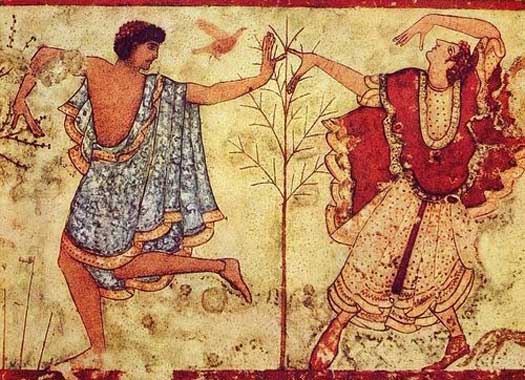 This is a 'funerary'...  And a sarcophogus...    The 'Mater Matuta'... now, that looks familiar... 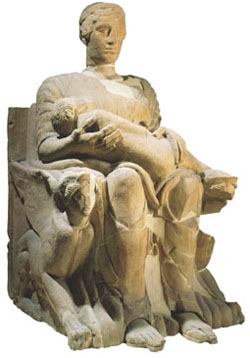 And this... is Typhon...  A sensitive, artistic, and religious, people... living in the Iron Age. With a love of horses... Well, what do you know? I think I'd like to know them better...  |
|
|
|
Post by Goldenfleeced on Dec 7, 2014 3:38:17 GMT
Now, aside from the frontal nudity, you will probably have noticed that Typhon sports two tails... Odd... But, there is another creature with two tails, shown here in the carvings at Cartmel Priory in England... 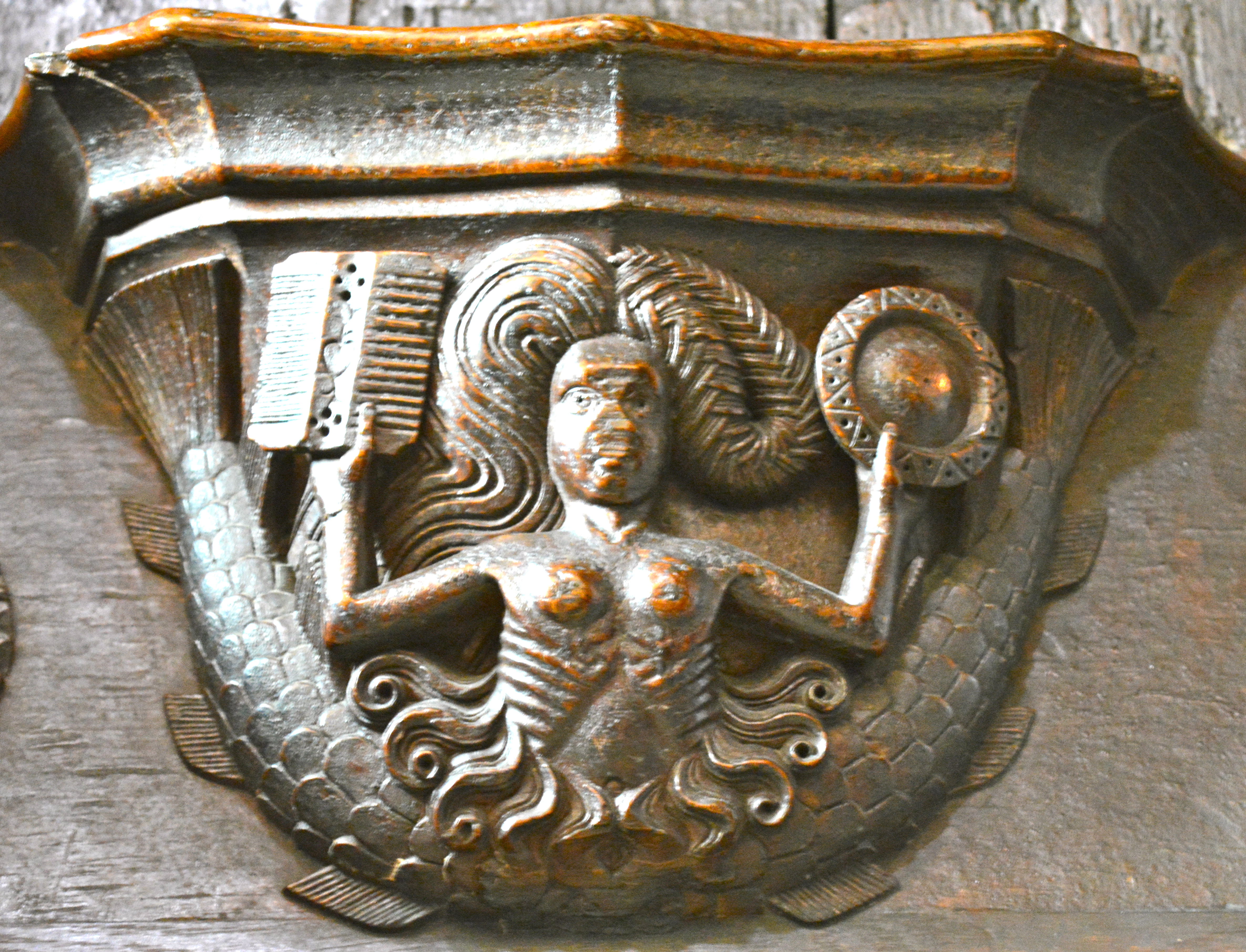 She is holding a 'sun disk'... which is funny... because she lives under the sea... Here she is again... 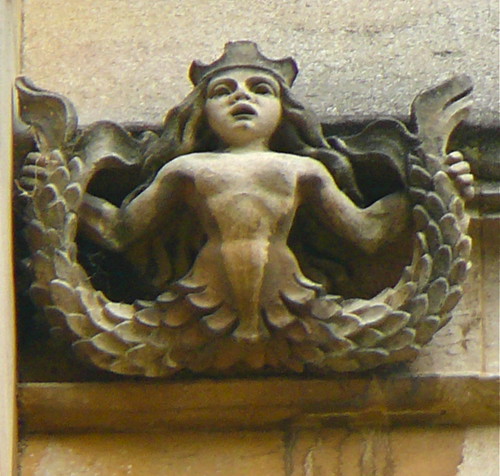  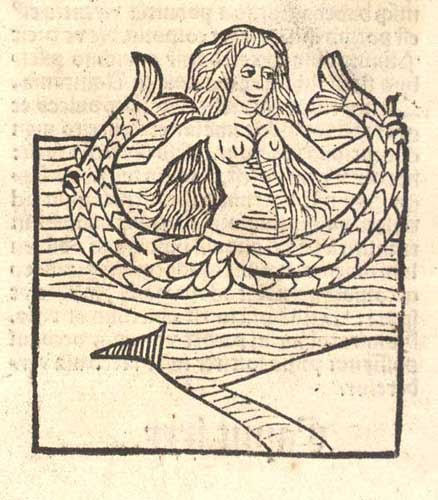  These are known as 'Melusines,' whose story should be familiar by now, in connection to our Merovingians... and our Quinotaur/Quintessence... And two tails, or 'serpents' around her trunk make her look almost like a...    And the Sun/Sonne of Righteousness will rise, with healing in its wings... And the Sun/Sonne of Righteousness will rise, with healing in its wings...Rise on the tide, maybe... speaking of which... It's a beautiful full moon out tonight...  |
|
|
|
Post by Goldenfleeced on Dec 7, 2014 4:41:11 GMT
|
|
|
|
Post by Goldenfleeced on Dec 8, 2014 3:48:01 GMT
Now, since this is an 'alchemical notebook,' I would like to show you something that I'm not sure how many other people know... or maybe I should better say, have contemplated... After all, I do feel as if I would like to add a little something to the general 'pool' of knowledge, even if I am not 'qualified' enough to be accepted as a contributor to other 'alchemical' forums... ...and that reminds me of another Xmas story, that I'll throw in at the end, just for fun...  But, siriusly, say... I want to point out for you the figures shown on the sarcophogus covers of the Etruscans that I printed above... here they are again...  Now, this is more than mere 'romanticism' on the part of the people involved, I assure you; and lest you tend to believe that this great Science of Alchemy was unknown to the very earliest peoples, let me show you a 'secret.' This, to refresh your memory is an illustration of the Alchemical Androgyne, or Rebis... See...?  These are 'Christ-ian' androgyne... alchemical... evidently, not a paradox...  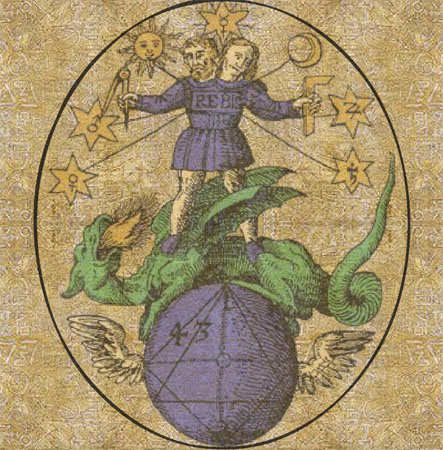  This is known as the 'Alchemical Wedding'... and it is a 'successful' return to our 'original' state as 'male and female,' just as it is written. You see that the Etruscans were attempting, with their final condition in the physical state, to be 'transformed' into the two-in-one that would return them to Paradise... which is an attempt to re-create this,- the 'Great Work'... 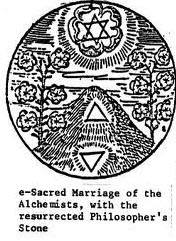 And so, it would seem that the entire purpose of 'marriage' or the 'holy mystery of sacred union' that is become our 'marriage rites' is a corruption of these rites... 23The man said, "This is now bone of my bones, And flesh of my flesh; She shall be called Woman, Because she was taken out of Man." 24For this reason a man shall leave his father and his mother, and be joined to his wife; and they shall become one flesh.Genesis, chapter 2 6"But from the beginning of creation, God MADE THEM MALE AND FEMALE. 7"FOR THIS REASON A MAN SHALL LEAVE HIS FATHER AND MOTHER, 8AND THE TWO SHALL BECOME ONE FLESH; so they are no longer two, but one flesh.…Mark, chapter 10 So, you see, the whole thing has not so much to do with a 'contract for goods,' as your custom has become, but a 'covenant' or 'bond' for 'life'... and wholeness. It is a bond that is both physical and spiritual in Nature, just as your 'bond' with 'God' should be... and could be. It is a most 'holy union,' indeed. A True 'transformer'... Just sayin'... ...and while we're "just sayin'..." let's shine a little light... a little red one...  |
|




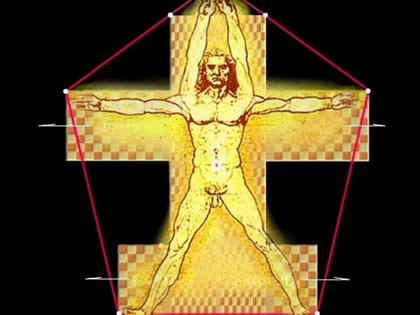














.jpg/1280px-Circus_Maximus_(Atlas_van_Loon).jpg)




















